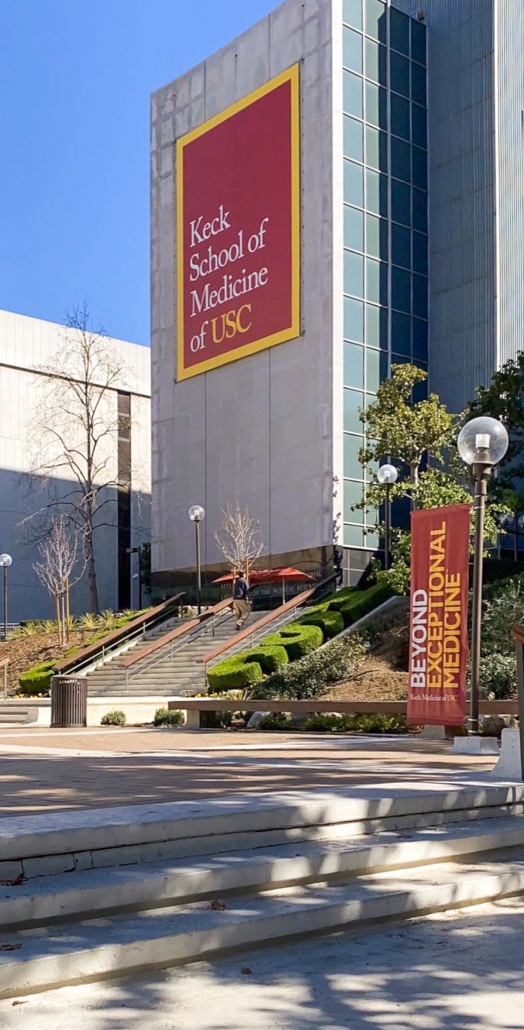Keck professors receive grant to further retinal research

Inspired by his life research in retinal prosthesis, co-director of the Roski Eye Institute Mark Humayun is in the early stages of developing retinal contacts that could prevent or slow down vision loss. Humayun, along with a team of experts that includes Keck School of Medicine Provost Gianluca Lazzi and assistant professor of translational genomics Bodour Salhia, won an award of nearly $2 million from the National Science Foundation Emerging Frontiers in Research and Innovation to further research on the contacts.
As a Keck professor of ophthalmology and director of the USC Ginsburg Institute for Biomedical Therapeutics, Humayun’s idea for retinal contacts came from his prior work in vision restoration. Humayun invented Argus II retinal prosthesis systems, an implant behind the eye that helps restore vision to blind patients with retinitis pigmentosa, a genetic disorder where the retinal cells at the back of the eye start to break down and become damaged.
“[The grant] led us to consider this approach … to try a controlled electrical stimulation to see if we could slow down or even prevent vision loss from certain types of retinal degeneration and retinal diseases,” Humayun said.
The purpose of retinal research and lens device creation is to develop preventative measures for patients who are at risk of becoming blind from these diseases, whereas the Argus II treats patients after they’ve already gone blind. The team of experts plans to continue this in their research funded by the grant.
“The first step is to really demonstrate whether true utilization of this device through electrical stimulation will in fact result in meaningful slowing of neuron loss,” Lazzi said.
The device also induces indirect electrical pulses that activate the remaining neurons in the retina. After working with Lazzi and finishing final tests, Humayun trained numerous surgeons on how to properly install the Argus II implant behind the eye. Approved by the Federal Drug Administration in 2013, the system became the first approved artificial retina system and has been commercially released through Second Sight, a medical prosthetics company for neurostimulation devices.
For more than 20 years, Lazzi has been part of the development team for Argus II’s hardware, ensuring its electronic functionality while implanted behind the eye. Lazzi said Argus II activates similarly to a scoreboard where hundreds of LED lights behind the eye turn on and off to display a partial image the blind patient sees by targeting certain points in the retina.
From his previous work in the bioelectromagnetic field, Humayun was able to develop the idea to use electrical stimulation to restore vision to people who are blind while Lazzi designed electrodes that would be placed on the retina to ensure the electronics used work properly in the eye.
The engineering work for the project has proved challenging because contacts were composed of electronic systems that pose a safety risk and may be damaged when submerged in the salty vitreous humor of the eye, Lazzi said. The issues have since been resolved by having electric currents and wireless transmissions strictly regulated in a casing.
Humayun also reached out to colleague Salhia in 2018 to ask her to collaborate on the project based on her translational genomics lab’s research with rat retinas that have degenerative diseases. Through this work, the team was able to show that electrical stimulation to the retina caused changes to genes associated with neuroprotection that maintains the structural integrity of neurons, which aids in preventing cell death.
“The beauty of the project lies in how three groups from very different backgrounds basically come together to solve a problem,” Salhia said. “It’s been one the funnest and most exciting and most innovative projects that I’ve recently engaged in because it’s just so highly interdisciplinary and people from very different backgrounds are coming together to solve a problem.”
Although the team of three has just begun its research for a new vision device with the funds provided from the grant, its members have already seen encouraging results in Salhia’s research on rat retinas and are looking forward to continuing their work to help patients in the coming years.
“We have this grant for three years, so we hope to be in a pretty good position,” Humayun said. “In three years, we hope to be pretty far along in all these aspects as to whether we would be ready to do human studies.”

